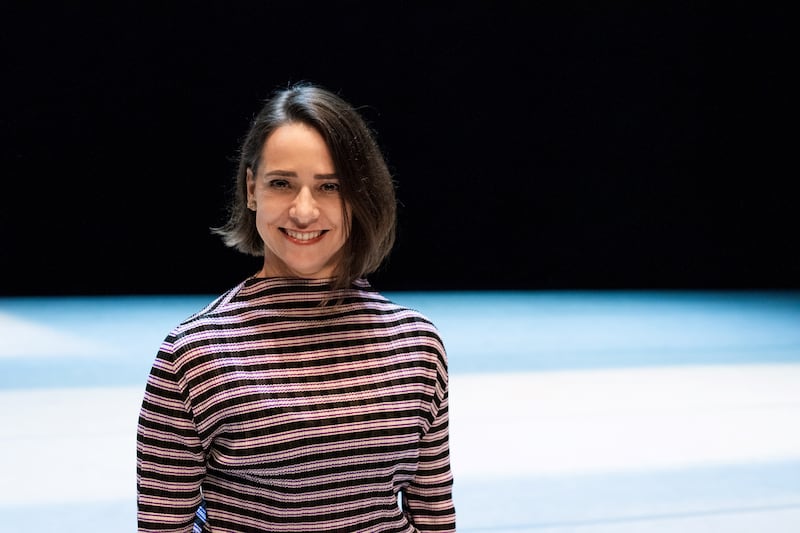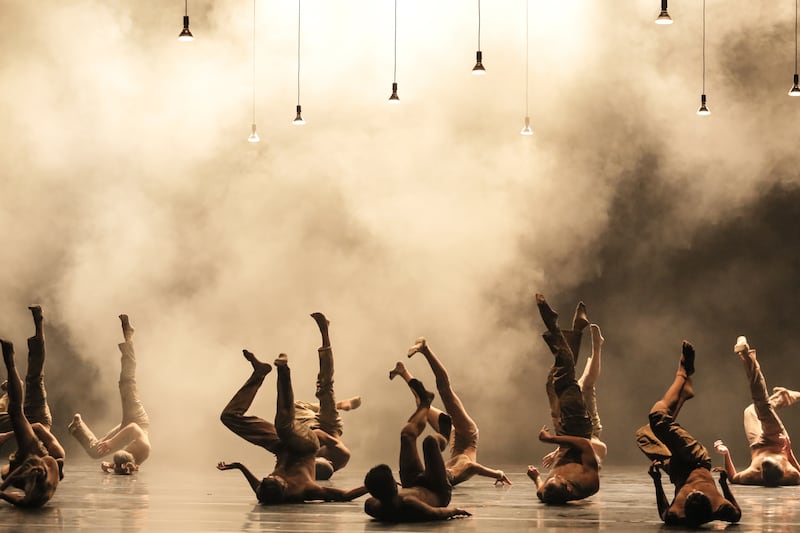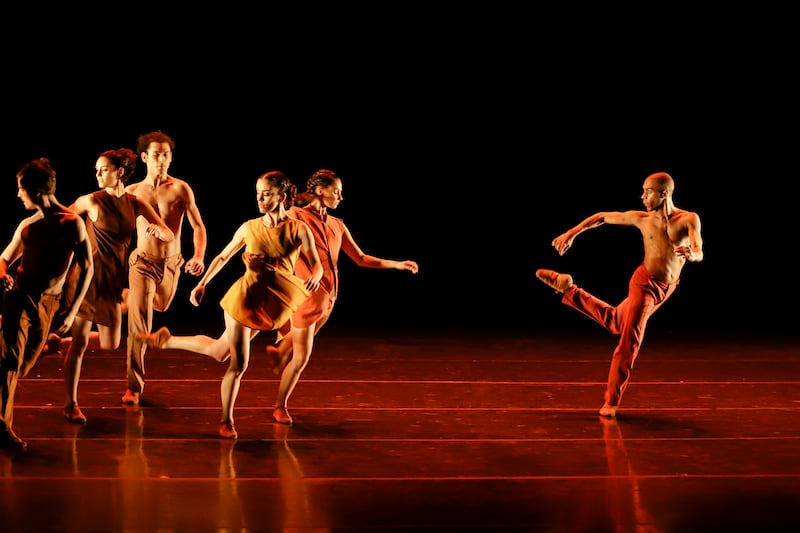On stage, São Paulo Dance Company seem carefree, their joyous, seamless moves showcasing their talent and spirit, but it has taken hard work and grit to build their reputation to the point where, as will be the case when they arrive in Dublin next month for their first Irish performances, the 29 members serve as ambassadors for Brazil’s nascent dance scene.
The company is in the fortunate position of having been formed, in 2008, with the backing of the Brazilian government, which has brought a reassuring level of stability and support even as it faces the same pressures as counterparts worldwide: attracting talent, growing its audience and collaborating with other artists while constantly looking for ways to operate on a streamlined budget.
Luckily, they are led by Inês Bogéa, a superwoman of Brazilian dance, who has a remarkable background as a dancer, choreographer, journalist and film-maker, and whose Renaissance-like approach to her role as artistic director is ideal at a time when dance is becoming a more collaborative artform.

“When the company first formed and [the politicians] asked me to direct it, they said, ‘We don’t understand what she wants to do exactly, but it’s okay, she has an idea,’” Bogéa says. “One of them was passionate that he really wanted a classical company. I told him, ‘I can’t direct a company that’s only classical, because I want to have contemporary and other things. We need to create for the future. I need to dialogue with my generation.’ And not all the dancers of this generation come from the same school.”
Insisting on diversity paid off. A decade and a half later, São Paulo Dance Company is well positioned to engage audiences interested in more than just tradition. The dancers are skilled in capoeira, samba and other Brazilian forms in addition to their classical ballet and contemporary training. What brings them together is a commitment to showcasing their country’s dance heritage.
“The group represents the differences we have in Brazil to the world,” says the dancer Luciana Davi, who joined in 2015. “We’re united as a company, and it’s a big responsibility, but it’s a great pleasure to be part of it and watch it grow.”
Historically, Brazilian dance is steeped in rhythm, with samba, bossa nova and forró – full of swivels and tilts – propelled by Afro-Caribbean beats and drums. These popular dance forms spill on to the streets in Brazil, especially for Carnaval. Many Brazilians will tell you they need little encouragement to get up and dance.
The classical techniques that arrived in the early 1900s came via immigrants from Italy, Portugal and Germany. This led to a proliferation of schools and companies that have since expanded throughout Brazil’s population of more than 200 million people. Across the country’s 26 states, a multitude of dance forms thrive.
São Paulo Dance Company incorporates this natural inclination to move with more formal styles such as ballet and contemporary dance. Today nearly every dancer in the company comes from Brazil; its vastness means there is plenty of talent to choose from. (Bogéa also says hiring dancers from elsewhere means lengthy paperwork that can delay the recruitment process, and time is valuable in any dancer’s short-lived career.)
Daniel Reca, an Argentinian who joined 10 years ago, is the only non-Brazilian currently in São Paulo Dance Company. “I travelled to Buenos Aires to audition because Inês was searching for dancers all over the world,” Reca says. “There were three auditions at that time: one in Germany, one in São Paulo and one in Buenos Aires. I was a more experienced dancer, because I already had professional experience in Argentina and with the Ballet de Santiago, in Chile.”
Bogéa commissions choreographers from everywhere to make new dances; although the mix might be weighted slightly more towards Latin America, well-known choreographers from the US, Canada and Europe also create in São Paulo. “It’s a gift in the sense that you are part of the creation. You are able to bring your personality, your details, who you are,” Reca says. “You think, ‘What can I bring to this choreographer that will inspire him? What is it that he will use from me and my dancing?’ For me, this is the greatest gift of being in this company.”

Reca will retire as a dancer after his performances in Ireland and Britain; he will then work for the organisation in another capacity, thanks to Bogéa’s commitment to finding ways to employ company members after they leave the stage. “For five years I’ve been working with the communications department, helping with social media, and developing products,” Reca says. “In the pandemic, I started to develop a web series called Meet the Artist. We present the artists of the company in four- or five-minute clips where you hear the dancers talking about themselves. We wanted to create a proximity with the audience, so that it’s not just the artist on stage and you don’t know anything about him. This way we break this ice and you know what the artist thinks, how he feels and what touches him.”
Helping dancers during transitions such as this is part of Bogéa’s larger plan. She wants to create something permanent in São Paulo’s cultural landscape that goes beyond what audiences see during a performance. “She’s always searching for me to go further,” Reca says. “And this is what I like in life. I don’t like to be comfortable in one place and stay there forever.”
Bogéa’s legacy also includes the new São Paulo Dance School, which opened two years ago under her guidance and now has an impressive 1,000 students. “I thought it was really impossible, but I said, ‘Okay, let’s go to apply to start this school,’” Bogéa says. “And we got it. The important part is that 50 per cent of the school is for poor people. And it is not only for classical ballet; it is for performance, modern, contemporary, musical theatre, producing and dramaturgy. After that, they are prepared to be a dancer.”
Bogéa’s own pathway to dance began in Brazil through gymnastics and capoeira. When she was 13 she enrolled in a ballet school offering a more codified Royal Academy of Dance syllabus. Her early training eventually led to a successful career with Grupo Corpo, another well-known Brazilian contemporary-dance company, and later to three university degrees, including in philosophy, the arts and business administration. She was exposed to arts and literature early on; her father was a mathematician and university professor, and her mother was educated in Paris.
I am happy to be with people I love and to share ideas with people I love
Bogéa drew on her experience as a journalist and film-maker for one of her most noteworthy achievements, an extensive project documenting the history of dance in Brazil. The 40 videos are all free to watch. “I learned the best things we will have in our life is travelling and education,” Bogéa says.
Besides directing the company and spearheading the new school, what does she consider her greatest accomplishment in her role as artistic director? “Two years ago we opened a new building,” she says. " One side is for the orchestra, another side is for the office of the secretary of culture, and at the top is a huge beautiful space for us.”
Although it’s difficult to entirely transport the ambiance of São Paulo to Ireland, it is possible to bring a Brazilian flair. Bogéa has carefully chosen the programme of dances for their current tour.

Anthem, created in 2019 by the Spanish choreographer Goyo Montero, showcases the company and its collective spirit. Like the other dances on the programme, it does not have a narrative per se; Bogéa says that if an audience member sees a story in the movement, any interpretation is valid.
Agora, by the Brazilian choreographer Cassi Abranches, features lively and uplifting movements punctuated with breathtaking glides and patterns. The drum beats and Afro-Brazilian percussion in this dance accompany the dancers’ momentum as it builds.
Gnawa, by Nacho Duato, which rounds out the programme, features the kind of pleasing onstage patterns and symmetry that years ago helped propel the seasoned Spaniard towards the pinnacle of the choreographic world. Perhaps the best-known dance on the programme, Gnawa premiered with Hubbard Street Dance Chicago in 2005 and has since featured in the repertoires of dance companies throughout the world.
“If you think about the three pieces, they talk about our time, not just right now but as humans,” Bogéa says. “One is about hope even though there’s something going on around that might be painful. The other connects us with the four elements of nature. And, finally, Cassi looks at our perception of time in terms of the past, present and future. Of course, in each one we all see different things. That is the beauty of what we do. We have different qualities of languages and movements, but at the same time we are talking about very sensitive things.”
Bogéa relishes sharing the company’s dancing abroad. “I am happy to be with people I love and to share ideas with people I love,” she says. “I might invite you to create something because I think it’s the good part of life. If you stay with me, I feel we can make a better thing.”
São Paulo Dance Company, presented by Dance Consortium, perform at Bord Gáis Energy Theatre, Dublin, on Monday, February 5th, and Tuesday, February 6th










